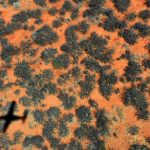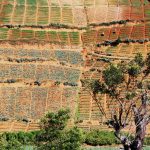Global Wildlife – down 58% since 1970 (30.10.16)
This has been a bad news, good news week for wildlife.
The bad news is that the Zoological Society of London (ZSL) and WWF Living Planet Report indicates the planet’s wildlife is on course to witness a near two-thirds population decrease since 1970.
The good news is that delegates representing the EU and 24 other countries have agreed that Antarctica’s Ross Sea – with 38% of the world’s Adeline penguins, 30% of Antarctic Petrels and 6% of Antarctic minke whales – is to become the world’s largest protected marine area.

The frightening thing about the ZSL and WWF assessment is that unless urgent action is taken to lessen humankind’s encroachment on other species’ ecosystems, the process of decline will be irreversible. In short, as the world’s population grows, the impact of continued deforestation, mega-fishing, pollution and poaching are combining to make the global mass extinction of wildlife not only a possibility, but a probability.

What to do? Well, for a start one needs to understand the impact of habitat loss, water resource stresses and poaching. In addition one needs to address the fact that the expansion of human population growth is directly pressurising historically safe wildlife havens.
Which is reason to celebrate the recent agreement to safeguard Antarctica. A pristine wilderness area with a delicate eco-system, firmly caught in the crosshairs of international commercial development. Tourism has a part to play: 37,000 tourists are on line to visit Antarctica next year alone.

The hope is that as long as tourism activities enhance the local environment, their footfall will be positive. This is an issue that, having recently returned from Kenya in East Africa, I touched on in my last two blog postings – as Laikipia and Samburu wildlife continues to live in delicate balance with an expanding local population.
In East Africa’s case, population growth statistics correlate to the decimation in WWF and ZSL assessment figures. For example Kenya’s population today is over 47 million, which is a four fold increase since 1970.

It’s a subject very close to the heart of the vibrant and dynamic NGO CHASE Africa (Community Health and Sustainable Environment), whose grassroots family planning charity work directly impacts on (a) addressing poverty and (b) stemming the future population spread into the country’s fragile wildlife areas.
Robin Witt, one of the charity’s founders and a long-standing friend of mine, aptly says “we try to frame the whole issue around giving people a chance to break out of poverty. When a woman can choose how many kids she wants, it’s a game changer.”

Wildlife in Kenya desperately needs a slow down in population expansion. This should be welcomed by all, as CHASE Africa reckon around 25% of women have an unmet need for contraception, with even higher demands in remote areas. Robin reports that “in some of the remote areas we cover, over 80% of women have an unmet contraception need”.
Certainly the signs are positive. Although the future depends on how quickly the fertility rate drops, it is presently falling to 4.1 now. If it stays at 4.1 the population will reach 130 million by 2050, if it falls to 2.68 it will reach 97 million.

Robin concludes: “Let’s face it – who would like to have 8 kids whilst trying to live on £3 a day? In CHASE AFRICA’s case we have reached well over 65,000 women, with approximately 50% of them choosing a three year contraceptive implant, at a cost of £7.50 per women. It’s a winner for both people and wildlife.”

Similarly last week when in the Masai Mara, when talking to two safari camp owners in the Mara Conservancies – Calvin Cottar (Cottar’s Camp) and Ricahard Roberts (Richard’s Camp) – they both re-endored the fact that wildlife conservation must be inextricably linked to the local population’s better interests. Without a multity stakeholder alliance the future is unstatainable.
Despite today’s changing world both remain upbeat about the future. Richard Roberts, who is founder of the Mara Elephant Project, saying “the fact that our rapid response wildlife units can immediately react to locally provided information is imperative. Speed, as much as technology (mobile phones, radios and drones), give us the ability to drive wayward elephants back into their conservation zones before local farmers and herdsmen are forced to take matters into their own hands. Effective poaching controls also heavily rely on local community participation.”

The ultimate goal is that the global decline in wildlife will be reversed as soon as possible. Although, how long it takes even to get the numbers back to 1970s levels, only time will tell.









